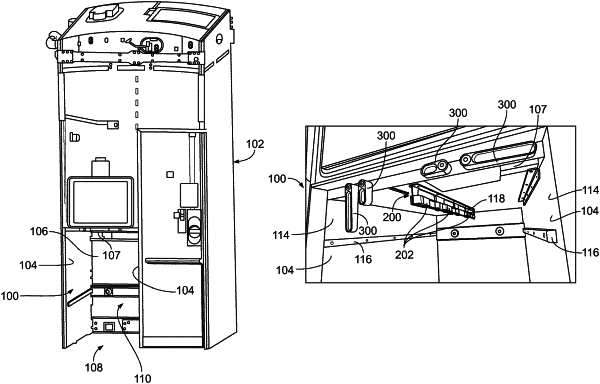|
1. A system for securing and stabilizing one or more galley carts within a stowage compartment within an internal cabin of a vehicle, the system comprising: one or more dampers securable to one or more surfaces of the stowage compartment, wherein the one or more dampers are configured to exert a spring force into the one or more galley carts to stabilize the one or more galley carts between the one or more dampers and one or more other surfaces of the stowage compartment, wherein the one or more dampers are secured to a central divider configured to downwardly extend from an interior surface of a top wall of the stowage compartment; wherein the one or more dampers comprise: a leading contact member, wherein the leading contact member is formed of a durable, low friction material, wherein the leading contact member includes a front tip connected to a blunted nose; a base plate, wherein the base plate is formed of the durable, low friction material, wherein the base plate includes a flat outer surface and an angled interior wall; a spring beam coupled to the leading contact member and the base plate, wherein the spring beam provides a spring constant, and wherein the spring beam includes a flat, deflectable main body, and wherein a front portion of the main body is sandwiched between the leading contact member and the base plate; and a trailing contact pad coupled to the spring beam, wherein the trailing contact pad is formed of the durable, low friction material, wherein the trailing contact pad outwardly extends from a rear end of the flat, deflectable main body, and wherein the trailing contact pad includes a rearwardly angled front face and a rounded lateral contact surface rearwardly extending from the rearwardly angled front face.
|
